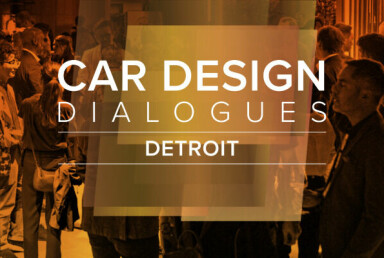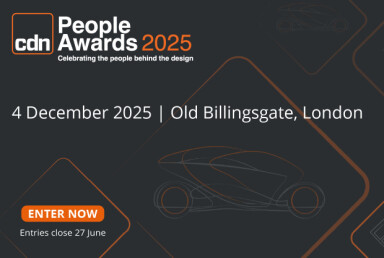An absolute unit
Designing the Paris-Dakar Bull

Car Design News speaks to Chris Milburn, designer of the legendary Paris-Dakar rally truck, the DAF Bull
Back in the mid-1980s, designer Chris Milburn landed the work placement of his dreams at DAF, designing the now legendary Paris-Dakar rally truck, the Bull, driven to victory in 1985 by Jan de Rooy. Milburn was reunited with his monstrous creation in October 2025 at a design retrospective at the DAF museum in Eindhoven. Car Design News took a trip down memory lane with the veteran designer.
Chris Milburn: I was offered an opportunity at DAF as part of a sandwich course so I came over and was given a number of projects, one of which was the Bull. The idea was to design a new Paris-Dakar rally truck. The previous year there had been the one with cabs on both ends, the double-headed monster.
I had been set on a project to look at the semantics of design, the visual metaphors of how we associate certain shapes with characteristics like strength, friendliness, aggressiveness and so on. When I was given this project, I thought about what visual metaphor could imbue the qualities of a rally truck. So I thought, let’s make it look like a bull, something stampeding across the desert. That was the background to it.

The fact it had a name gave it an identity, which was key because this was a product competing against lots of other trucks. It needed to be seen as something different. The Bull gave it that identity. It was a fantastic project. You can see in some of the early shots how it all came together. I was really proud to be part of that process.
Car Design News: Was it based on an existing truck?
CM: The engineers had created the chassis. It was really impressive. It was a twin-engine, 440bhp, 11.5-litre engine at the back and at the front, with driven front and rear wheels, so four-wheel drive. It was impressive to see it come together. When it was first fired up, I was asked to come down to the workshops. They fired up the first engine and it snorted exhaust out, then the second engine fired up, the gears engaged, they linked together and the thing yelped on the polished floor. I thought it is a bull. It was a snorting animal, and very fitting.

I told Bart van Lotringen a few months ago that I’ve done a lot of things, but the fact this project has endured for 40-odd years is impressive and I’m pleased to have been part of it. The Bull and I got reacquainted yesterday, which was great. Like meeting an old friend again.
CDN: Tell us about the tapering form, what was the thinking there?
CM: A combination of factors. Aerodynamics played a part, but when you think about the horsepower it produced, it wasn’t the top priority. It was more about creating a lightweight structure with presence. Most of the design influence came from the bull metaphor. The shapes, the haunches, the smaller back end, the bull bars, the spotlights like horns, the underbelly protection – as I sketched it, it began to feel more like a bull.

I presented three designs. This one was the most characterful. Those designs were taken away to be reviewed by a team. The message came back later that afternoon that they wanted the Bull.
It was quite easy to create these rather large haunches of a bull in the main cabin area. This was where all the spare tyres needed to be. The double-headed monster had been heavy because of the two cabs, so having a smaller back end also made the vehicle lighter. I tried to create that imposing look.
CDN: Did you see it win?
CM: These were pre-internet days, so I went home in September and didn’t hear anything until it was rallying in January. I caught it on satellite television. I vividly remember a helicopter shot zooming in on someone on a motorcycle bouncing across the sand, then the helicopter pulled back and the Bull came up behind him and overtook him. It moved at such speed. It was huge but could really shift.
When I went back in September at the beginning of the new year, everyone asked what I had done during my placement. I said I designed a rally truck. These things don’t come around often.
CDN: Did you ever get to drive it?
CM: No I don’t think they’d have let me loose on it. I did see it in the state where it had all the graphics before I left in September. There is a photograph that was taken the following year at the British Truck Show in Peterborough, around March. That was after the rally. That was the last time I saw it. To see it again yesterday was great. The fact that it still exists and hasn’t been left in a barn.

CDN: They only made one?
CM: Just the one. It’s been well maintained and is now going on a rally again next year.
CDN: What about the interior... Any creature comforts?
CM: Fairly sparse. Bucket seats for the driver and co-driver, full roll cages. I got into it yesterday – I jumped into it easily when I was 20, but yesterday was more of a climb. It’s spartan, an early-1980s design: thin steering wheels, simple cluster. Everything unnecessary removed, like in a rally vehicle. You sit very high up but with a narrow field of vision through the windows. Driving that at speed across a desert must be something.
As for my career, it has always been in my portfolio. I learned a lot at DAF. The project on design semantics made me think, and I’ve used that throughout my career.






